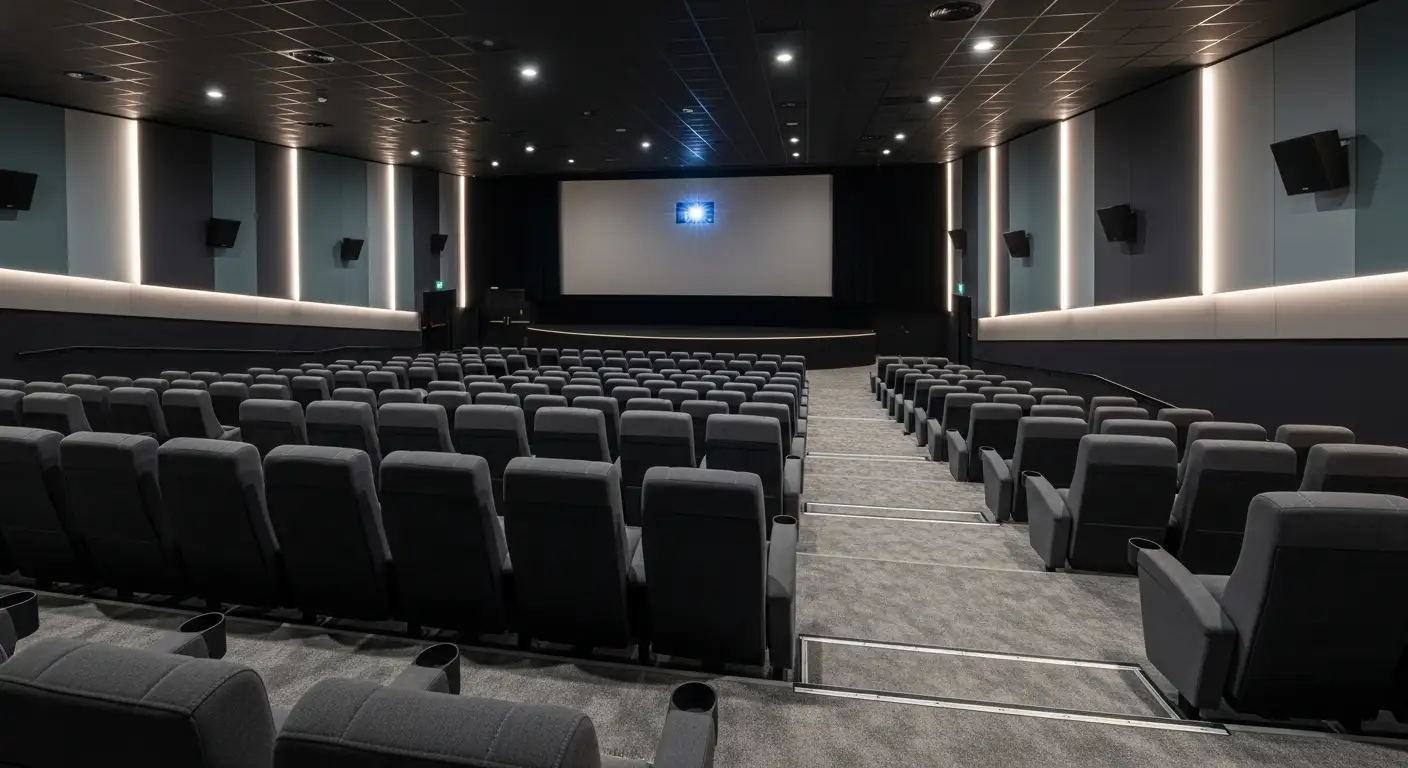Speech Apraxia and Autism
An Overview of Speech Development Challenges in Autism Spectrum Disorder and Apraxia
Speech apraxia and autism spectrum disorder (ASD) are distinct neurodevelopmental conditions that often intersect, creating complex challenges in diagnosis and intervention. While apraxia is primarily a motor speech disorder impacting the coordination of mouth movements, autism encompasses a broader spectrum of social, communicative, and behavioral differences. This article explores the signs, underlying causes, neurobiological markers, and emerging therapies that address these intertwined conditions, emphasizing the importance of early detection, neurodiversity-affirming practices, and comprehensive resources for families and professionals.
Speech Apraxia: Symptoms, Diagnosis, and Characteristics

What are the signs of difficulty coordinating oral movements such as lips, tongue, and jaw?
Children with apraxia of speech often struggle to coordinate the movements of their mouth muscles needed to produce speech. They may grop, stretch, or struggle to shape their lips, tongue, and jaw appropriately while attempting to speak. This difficulty is not due to weak muscles but rather to impaired motor planning, meaning their brains have trouble organizing the sequence of movements necessary for speech.
How do inconsistent speech errors and pronunciation issues manifest?
A hallmark of childhood apraxia of speech (CAS) is inconsistency in speech errors. A child might pronounce the same word differently on multiple occasions or substitute, omit, or distort sounds unpredictably. They may be unable to accurately reproduce complex sounds or sequences, leading to distorted words and unclear speech. Such variability can make it challenging for others to understand the child's speech, particularly as they grow.
What are the developmental challenges related to delayed speech and sound imitation?
Children with apraxia often experience delayed onset of first words. They may have trouble imitating sounds or words, even after repeated attempts. Groping movements and speech sound distortions are common, and their speech may initially be limited or absent, with notable struggles in moving from simple sounds to more complex speech patterns. These issues typically become more prominent as linguistic demands increase with age.
What are abnormal speech stress patterns and prosody abnormalities?
One distinctive feature of CAS includes abnormal prosody — the rhythm, pitch, and stress patterns of speech. Children may produce speech with excessive stress on all syllables, uneven intonation, or inappropriate emphasis that doesn’t match typical speech patterns. These prosodic abnormalities further differentiate apraxia from other speech disorders and can impact the emotional and communicative effectiveness of their speech.
How is assessment conducted for children suspected of having speech apraxia?
Diagnosing CAS involves detailed evaluation of speech consistency, oral motor strength, hearing, and broader communication skills. Speech-language pathologists observe how well the child's speech attempts are produced across different settings and over time. They assess the child's ability to produce sounds, imitate speech, and transition smoothly from one sound or word to another.
Assessment is often complex, especially in children with autism, where overlapping behaviors might obscure clear signs. To confirm the diagnosis, clinicians may observe responses to various interventions such as visual supports, gesture cuing, and core vocabulary practice during multiple sessions.
How do resources support families and professionals?
Availability of resources and educational materials for speech apraxia and autism is expanding. Websites, guides, and training programs detail diagnostic procedures, intervention methods, and communication approaches like augmentative and alternative communication (AAC). These include strategies for home practice, classroom supports, and therapy options. Funding assistance for adaptive devices, community outreach, and training on evidence-based therapies like PROMPT and Discrete Trial Training help ensure children access tailored support.
How is speech apraxia differentiated from autism during diagnosis?
Discerning CAS from autism spectrum disorder (ASD) involves evaluating specific speech and behavioral signs. Children with apraxia typically show inconsistent sound errors, difficulty sequencing sounds, and groping behaviors but often retain better social understanding and receptive language skills. Conversely, children with autism exhibit broader social communication deficits, such as poor eye contact, limited gestures, and repetitive behaviors, alongside language delays.
While both conditions frequently co-occur — as studies indicate approximately two-thirds of children with autism also have apraxia — careful assessment by specialists remains essential. Diagnostic tools focus on speech motor planning characteristics to distinguish apraxia from the social and behavioral features of autism, enabling more effective, personalized intervention plans.
Neurobiological Insights: Brain Structure and Markers in Speech Apraxia and Autism

What is known about the neurobiological markers and brain structure differences associated with speech apraxia and autism?
Research into the neurobiology of speech apraxia (CAS) and autism reveals distinctive patterns in brain structure, with some overlaps that help in understanding and diagnosing these conditions. Neuroimaging studies, particularly MRI scans, have identified specific regions where differences in volume and cortical thickness are associated with each condition.
Children with Autism Spectrum Disorder (ASD) commonly exhibit increased volumes in the fronto-temporal lobes, basal ganglia—including the caudate, putamen, and nucleus accumbens—as well as the hippocampi, cerebellum, and right superior temporal gyrus. These volumetric differences are thought to contribute to the social cognition, language processing, and motor functions affected in autism. Larger hippocampal and basal ganglia volumes are especially notable when comparing children with ASD to typically developing children, and are considered neuroanatomical markers that support early diagnosis.
In children diagnosed with childhood apraxia of speech (CAS), neuroimaging shows increased volume in the frontal regions, notably the pars triangularis, paracentral region, and parts of the inferior parietal lobe such as the supramarginal gyrus. Additionally, there's an increase in the volume of the nucleus accumbens. Some studies also report a reduction in cortical thickness in the frontal lobe, possibly affecting motor planning necessary for speech. These structural differences underpin the motor planning deficits characteristic of CAS.
Differences in brain volumes and cortical thickness in autism and CAS
| Brain Region | Autism (ASD) Volume/Thickness | Childhood Apraxia of Speech (CAS) Volume/Thickness | Additional Notes |
|---|---|---|---|
| Fronto-temporal lobes | Increased volume | Increased volume in pars triangularis and paracentral regions | Involved in language and social functions |
| Basal ganglia | Increased volume, especially caudate | N/A | Relevant for motor control and procedural learning |
| Hippocampi | Larger volume | N/A | Memory and contextual learning |
| Cerebellum | Increased volume | Not significantly reported | Coordination of motor movements |
| Right superior temporal gyrus | Increased volume | Not specifically reported | Auditory processing and social cognition |
| Cortical thickness | Variability; often increased in frontal regions | Reduced in frontal lobe | Affects motor and executive functions |
| Nucleus accumbens | Larger volume | Increased volume | Implicated in motivation and reward processing |
Neuroimaging findings favoring early differential diagnosis
Advances in neuroimaging have enabled researchers to identify potential neurobiological markers that can facilitate early differential diagnosis of ASD and CAS. Subcortical structures like the caudate nucleus and hippocampi show distinct volume differences between the two conditions. For instance, larger caudate volumes are more frequently observed in ASD, while increased volume of the nucleus accumbens is characteristic of CAS.
Machine learning analyses utilizing machine classifiers on MRI brain data have shown promising results. These models can reliably distinguish children with ASD from typically developing children based on patterns in subcortical and cortical structures. However, identifying CAS remains more challenging, as neuroanatomical distinctions are subtler, and data is limited by small sample sizes.
Machine learning approaches distinguishing ASD from typical development and CAS
| Approach | Accuracy in Differentiation | Relevant Brain Features | Notes |
|---|---|---|---|
| MRI-based machine learning models | High (often over 90%) for ASD vs TD | Subcortical volumes (caudate, hippocampus), fronto-temporal regions | Supports early screening and diagnosis |
| Classifiers for CAS | Less effective, small sample sizes | Frontal lobe volume, nucleus accumbens, cortical thickness | Need further data for robust models |
Overall, the integration of neuroimaging techniques and machine learning models offers a promising pathway to understand the neurobiological underpinnings of speech apraxia and autism. Such tools could lead to more precise early diagnosis, allowing interventions to be tailored to the unique brain structure profiles of each child. Recognizing these differences emphasizes the importance of considering neuroanatomical data alongside behavioral assessments for comprehensive evaluation.
Understanding the Motor and Cognitive Foundations of Speech Disorders in Autism
What are the underlying causes and factors linking speech apraxia and autism?
Speech apraxia and autism often co-occur, with research showing that roughly two-thirds of children diagnosed with autism also experience apraxia of speech. Apraxia is a motor speech disorder where children know what they want to say but struggle to execute the necessary movements for speech. The roots of this link lie in abnormal brain development affecting regions responsible for planning and coordinating speech movements.
Neuroimaging studies reveal that children with both conditions typically show structural differences in brain areas like the fronto-temporal regions, basal ganglia (including the caudate, putamen, and nucleus accumbens), hippocampi, and the cerebellum. These areas are crucial for motor planning and speech coordination. Differences include increased volume in some regions and reduced cortical thickness in others, which can disrupt the neural pathways needed for fluent speech.
The shared neurological disruptions suggest that impairments in motor planning circuits contribute to the difficulty in speech production seen in both autism and apraxia. While autism broadly affects social skills and behavior, the high incidence of apraxia within autism indicates overlapping pathways related to speech motor control.
Early identification through neuroimaging and behavioral assessments can facilitate timely intervention. Such early screening is crucial because treating both conditions simultaneously can significantly enhance speech development and social communication skills, improving the child's overall quality of life.
How do speech apraxia and autism impact communication and development?
Speech apraxia significantly hampers expressive language, leading to inconsistent speech errors, delayed speech onset, and difficulty imitating sounds. Children with apraxia often know what they want to say but cannot coordinate their mouth muscles to produce speech correctly. This can cause frustration and hinder their ability to communicate effectively.
Autism spectrum disorder involves delays in language development, social communication challenges, and atypical speech patterns, such as unusual prosody (rhythm, stress, intonation). Many children with autism struggle to develop functional speech, which impacts social interactions and learning.
When children face both conditions, these difficulties can compound, making social engagement more challenging. Limited speech may also coincide with sensory sensitivities, further affecting their ability to process and respond to communication cues.
Interventions tailored to these overlapping issues often include visual supports, gesture cueing, repetitive practice, and sensory integration strategies. These help improve both speech production and social communication skills.
Early diagnosis and dedicated speech-language therapy, focusing on motor programming and social communication, can lead to notable progress. Such early, integrated approaches are essential for supporting children’s development and fostering their capacity to interact meaningfully with others.
Therapeutic Approaches: Bridging Motor Speech Disorders and Autism

What are the treatment options and intervention strategies for co-occurring speech apraxia and autism?
Treating children with both speech apraxia and autism involves a carefully tailored approach that respects each child's unique needs and sensory sensitivities. As these conditions often coexist, interventions should be individualized and incorporate developmentally appropriate strategies.
Speech therapy forms the cornerstone of treatment, focusing on motor programming and muscle shaping. Therapists use techniques that help children coordinate movements of the lips, tongue, and jaw to produce clearer speech. This often includes practicing specific sounds and sequences repeatedly, a method supported by research showing that consistent practice can improve speech clarity.
In addition to motor-based exercises, therapists incorporate linguistic cues and sensory strategies. These can involve visual supports, gestural cues, and rhythmic techniques like music or tapping to enhance speech rhythm and prosody. Such multisensory approaches can be especially beneficial for children with sensory processing differences.
Augmentative and alternative communication (AAC) devices—such as picture exchange systems, speech-generating devices, or sign language—are valuable tools. They provide alternative means for children to communicate effectively, reducing frustration and supporting language development.
Adapting traditional therapies to align with neurodiversity principles is crucial. This means avoiding overstimulation, reducing reliance on compliance-driven methods, and respecting each child’s bodily autonomy. Strategies like offering choices, respecting sensory preferences, and using play-based activities foster a supportive learning environment.
Parental involvement is a vital component. Home practices including object labeling, encouraging imitation through play, and engaging in musical or rhythm-based activities reinforce therapy goals. These practices empower families to support their child's progress consistently.
Early assessment and ongoing monitoring enable therapists to fine-tune interventions. Regular review of progress allows for adjustments that match developmental changes, ensuring that therapy remains relevant and effective.
In summary, effective intervention for children with both autism and apraxia is multifaceted. It combines motor speech techniques, sensory and rhythmic strategies, AAC tools, and personalized, neurodiversity-affirming practices, with active parental involvement to maximize communication outcomes.
Social and Educational Resources for Supporting Children with Speech and Autism Challenges

What resources and education are available for parents, caregivers, and clinicians about speech apraxia and autism?
Families, caregivers, and professionals increasingly have access to a wide range of resources and educational materials that focus on speech apraxia and autism. These resources are essential for understanding diagnosis, intervention strategies, and communication methods tailored to these conditions.
One of the primary sources of information includes organizations dedicated to speech disorders and autism support. These organizations offer comprehensive guides on identifying symptoms, understanding developmental milestones, and navigating treatment options. They often provide detailed materials about augmentative and alternative communication (AAC) devices, which can be crucial for non-verbal children or those with severe speech impediments.
Online platforms serve as hubs for training and disseminating evidence-based practices. Programs like Discrete Trial Training (DTT), PROMPT therapy, and facilitated communication are well-documented and accessible for clinicians and parents interested in implementing effective interventions. These platforms also highlight the importance of tailored approaches to accommodate sensory sensitivities and neurodiversity-affirming principles.
In addition to online resources, community outreach plays a vital role. Many local organizations and clinics offer summer speech camps, social skills groups, and workshops dedicated to speech development and autism awareness. These programs often include IEP (Individualized Education Program) planning guides, which assist families in collaborating with schools to develop personalized educational goals.
Literature and digital media are also valuable educational tools. Books written for caregivers or clinicians detail strategies for facilitating speech and language growth. For example, guides on using visual supports, gestures, and play-based methods help in practical daily application.
Funding for assistive communication devices and therapy is another critical resource. Many non-profit organizations, schools, and government programs help families access financial aid, presuming competence to foster communication growth. These resources aim to bridge gaps and ensure equitable access to essential therapies.
Furthermore, community outreach programs often emphasize early screening and ongoing assessments, which can lead to more timely interventions. They also serve to reduce stigma and improve acceptance of neurodiversity.
With the proliferation of online training modules, webinars, and virtual support groups, families and clinicians can stay informed about the latest research findings. Evidence-based practices such as the MIND-AP framework integrate neurodiversity principles within motor speech therapy, offering tailored interventions respectful of individual differences.
In essence, these resources empower families and teachers with knowledge and skills crucial for supporting children with speech apraxia and autism. Continuous education and accessible support systems are vital for improving communication outcomes and fostering inclusive educational environments.
| Resource Type | Examples | Purpose | Additional Notes | |----------------|------------|---------|------------------| | Organizations & Guides | Autism Speaks, ASHA, Autism Support Centers | Education, diagnosis, intervention | Offer downloadable guides, workshops | | Therapy Programs | DTT, PROMPT, facilitated communication | Evidence-based treatment | Require trained professionals | | Community Programs | Summer speech camps, social skills groups | Practical training, socialization | Often need early registration | | Books & Digital Media |
A Holistic, Person-Centered Outlook: Embracing Neurodiversity and Supporting Communication

How do neurodiversity-affirming approaches influence speech therapy for autistic individuals with motor speech issues?
Neurodiversity-affirming approaches to speech therapy for autistic individuals who face motor speech challenges, such as childhood apraxia of speech, focus on supporting and respecting all modes of communication. Instead of solely emphasizing speech production aligned with neurotypical standards, these methods recognize and validate diverse ways of communicating, including gestures, sign language, augmentative and alternative communication (AAC) devices, and speech when appropriate.
A core principle is presuming competence, meaning therapists and families assume the child understands and can learn communication skills, even if current behaviors differ from typical speech patterns. The approach involves celebrating individual strengths, interests, and preferences to foster meaningful engagement. This could involve integrating personal passions into therapy activities, which motivates children and builds confidence.
Therapy goals are highly individualized and functional, emphasizing practical communication that improves everyday life rather than conforming to normative speech patterns. Emphasizing understanding each person's unique neurophysiology, sensory processing, and communication style helps tailor interventions to be more effective. For example, some children may respond better to rhythmic, sensory-based approaches, while others benefit from visual supports or AAC.
Supporting sensory needs is vital because many autistic individuals have sensory sensitivities that influence their participation in therapy. Incorporating sensory regulation strategies allows children to feel more comfortable and engaged during sessions.
Self-advocacy and respectful language are fundamental components. Therapists work collaboratively with clients and families to promote autonomy, teaching children to communicate their preferences and needs confidently. Therapy respects bodily autonomy, allowing children to choose methods of communication that feel comfortable and effective.
Further, these approaches advocate for societal acceptance and inclusion, striving to reduce the pressure to conform to neurotypical standards and instead embrace neurodiversity as a natural variation of human experience. This mindset supports not only individual growth but also promotes broader societal understanding and acceptance.
In summary, neurodiversity-affirming speech therapy recognizes the importance of respecting individual differences, fostering self-advocacy, and promoting inclusive communication, ultimately supporting children with autism and motor speech issues in reaching their full potential.
Toward a Future of Inclusive Communication Support
Understanding the interconnectedness of speech apraxia and autism underscores the importance of early diagnosis, individualized intervention, and neurodiversity-affirming practices. With ongoing research revealing neurobiological markers and innovative therapeutic approaches, families and clinicians are better equipped to support meaningful communication development. Emphasizing respect, autonomy, and strengths-based strategies fosters a more inclusive environment that celebrates diverse ways of expressing oneself, ultimately paving the way for improved quality of life and societal acceptance for autistic individuals with speech motor challenges.
References
- Apraxia of speech | Autism Speaks
- Are Apraxia and Autism Related? - News-Medical.net
- Autism Spectrum Disorder and Childhood Apraxia of Speech
- Treating Apraxia in Kids with Autism - Better Speech
- Apraxia a Common Occurrence in Autism, Study Finds
- Could It Be Both? Distinguishing Between Autism and Childhood ...
- Is There a Connection Between Apraxia and Autism? - Expressable
- Autism and rare childhood speech disorder often coincide - Penn ...
Other articles
Recent articles

Cultural Perspectives On Autism Around The World

Autism And Creative Arts As Emotional Expression Tools

Developing Emotional Regulation Skills In Autistic Teens

Best Sensory-Friendly Lighting Solutions For Autism

Cognitive Behavioral Therapy Adaptations For Autism

Best Practices For Autism-Friendly Movie Screenings

Autism And Eating Challenges Beyond Picky Eating

Best Practices For Autism-Friendly Public Transport Design

Best Ways To Foster Collaboration Between Parents And Schools For Autism Support

Supporting Autistic Children During Transitions Between Activities

The Role Of Teachers In Fostering Autism Peer Acceptance

Using Art Therapy To Support Children With Autism

Autism And Strategies For Addressing Sensory Defensiveness

Autism And The Benefits Of Structured Leisure Activities

How To Support Autistic Students During Exam Season

Autism And Goal Setting For Personal Growth

How To Use Gamification In Autism Learning Programs

How Schools Can Reduce Bullying Of Autistic Students

Early Intervention Strategies For Autism Spectrum Disorder

The Role Of Therapists In Autism Life Skills Coaching

How To Support Autistic Individuals In Crisis Situations

Autism And Self-Care Routines For Stress Management

Understanding Echolalia And Its Role In Autism Communication

Autism And Fine Arts Education Benefits

The Impact Of Multisensory Learning On Autism Education

How Family Counseling Supports Autism Household Dynamics

Best Practices For Inclusive Playgrounds For Autism

Best Practices For Autism-Friendly Shopping Centers

How Autism Affects Fine Motor Skill Development

Best Ways To Introduce Sensory Activities Into Daily Routines

How Sports Teams Can Be Inclusive Of Autistic Players

Autism And Strategies For Building Workplace Resilience

Autism And The Impact Of Hormonal Changes During Puberty

How To Support Autistic Students In Foreign Language Classes

Best Ways To Teach Money Skills To Teens With Autism

Supporting Siblings Of Children With Autism

Autism And Co-Occurring Gastrointestinal Disorders

The Role Of Art Projects In Autism Sensory Integration

How Schools Can Incorporate Sensory Break Spaces

Best Practices For Autism Sensory Regulation At School

Autism And Strategies For Teaching Organizational Skills

Understanding The Relationship Between Autism And Anxiety Disorders

Autism And Life Planning For Long-Term Care

Exploring Visual Supports In Autism Education

Ways To Encourage Social Interaction In Children With Autism

The Connection Between Autism And Dyscalculia

The Role Of Occupational Therapy In Transition Planning For Autism

The Role Of Physical Therapists In Autism Motor Skills Support

How To Teach Decision-Making Skills To Autistic Young Adults

The Connection Between Autism And Epilepsy

Best Practices For Transitioning Autistic Children Into New Schools

Autism And Time Management Challenges In Adulthood

The Role Of Visual Arts In Autism Communication Development

How To Address Tactile Defensiveness In Autism

Best Practices For Telehealth Autism Therapy

How To Help Autistic Children Develop Friendship Skills

How Schools Can Support Autistic Students In Career Prep

Best Strategies For Autism-Friendly Event Planning

Understanding Noncontingent Reinforcement In Autism Behavior Plans

How Drama Therapy Benefits Autistic Individuals

Best Practices For Autism-Friendly Fitness And Recreation Centers

Best Ways To Promote Healthy Social Media Use For Autistic Teens

How To Help Autistic Children Cope With Public Speaking

Autism And Strategies For Managing Unexpected Changes

Best Podcasts About Autism For Parents And Educators

Autism And The Impact Of Seasonal Changes On Behavior

The Role Of Diet In Managing Co-Occurring Conditions With Autism

Sleep Challenges In Autism And Practical Solutions

Best Ways To Build Daily Routines For Autistic Children

Best Practices For Supporting Autistic Entrepreneurs

Autism And Strategies For Navigating Large Social Gatherings

Adaptive Sports And Recreational Activities For People With Autism

Autism And The Benefits Of Story-Based Learning Activities

Understanding The Role Of Play In Autism Development

Autism And The Impact Of Environmental Noise On Learning

How To Create Autism-Friendly Community Spaces

Autism And Chronic Health Conditions: What To Know

The Role Of Care Managers In Autism Life Planning

How To Teach Social Boundaries To Autistic Children

How Autistic Individuals Experience Empathy Differently

How To Support Autistic Employees In Remote Work Settings

Autism And The Relationship Between Motor Skills And Learning

How To Create Community Resource Guides For Autism Families

How To Teach Daily Living Skills To Autistic Teens

Autism And The Impact Of Mind-Body Practices On Stress Reduction

Autism And The Benefits Of Outdoor Group Activities

How To Create Autism-Friendly Sensory Paths In Schools

Best Practices For Autism-Friendly Park And Recreation Areas

Autism And Strategies For Reducing School Refusal

Supporting Autistic Individuals In Public Speaking

The Role Of Diet In Managing Autism Symptoms

The Benefits Of Gardening Clubs For Autism Social Development

How To Prepare Autistic Children For Dental Visits

Autism And Employment: Career Paths That Work

Best Practices For Autism-Friendly Hotels And Lodging

The Impact Of Screen Time On Autism Development

Autism Screening Tools For Early Childhood

The Role Of Physical Exercise In Autism Therapy

Best Strategies For Supporting Autistic College Students

The Role Of Technology In Autism Early Detection
We’re All About You, Your Family, and Your Child

